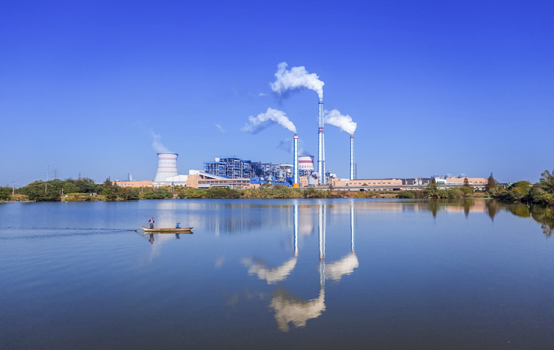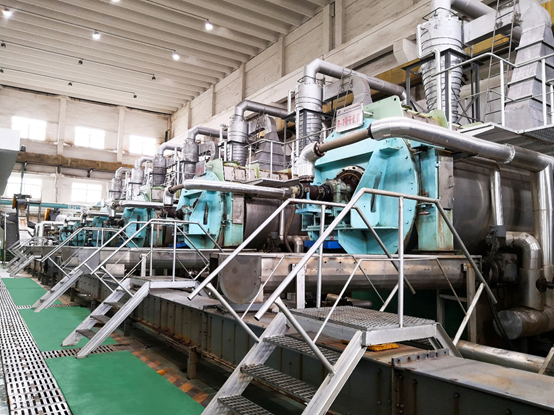

BLOG
After Co-Incineration of Sludge with Municipal Solid Waste: How to Treat the Burned Ash?
After Co-Incineration of Sludge with Municipal Solid Waste: How to Treat the Burned Ash?
02 April 2025
I The Integration of Waste Incineration and Sludge Treatment
Municipal solid waste (MSW) incineration is a common waste management method that reduces waste volume and recovers thermal energy. Meanwhile, sewage sludge from wastewater treatment plants contains high organic matter and moisture. Direct landfill not only occupies land but also risks groundwater contamination. Thus, co-incinerating sludge with MSW has emerged as a viable solution.

Advantages of Co-Incineration:
- Volume Reduction: Incineration reduces sludge volume by over 90%, significantly decreasing landfill demand.
- Energy Recovery: Combustion of organic matter in sludge generates electricity or heat, improving energy efficiency.
- Pathogen Elimination: High-temperature incineration kills pathogens, minimizing pollution risks.
However, incinerated sludge ash still contains heavy metals and inorganic salts. Improper handling may harm the environment. Therefore, proper ash management is critical.
Composition and Characteristics of Incinerated Sludge Ash:
- Bottom Ash (80–90% of total ash):
- Main components: Silicates, alumina, calcium oxide.
- Low heavy metal content, stable physical properties.
- Fly Ash:
- Fine particles enriched with heavy metals (e.g., Pb, Cd, Hg), dioxins, and alkali metals (K, Na).
- Primary source of environmental risk.
Impact of Incineration Processes:
- High-dry route (moisture <20%): Reduces fly ash output but increases pretreatment costs.
- Direct injection route (moisture ~80%): Avoids drying equipment but may elevate heavy metal concentrations in ash.
- Technology choice (e.g., fluidized bed vs. grate incinerators) significantly affects ash composition, requiring tailored treatment strategies.
II Key Treatment Methods for Incinerated Sludge Ash
- Landfilling:
- Application: Suitable for bottom ash with low heavy metals.
- Pros: Simple operation, low cost.
- Cons: Land-intensive, long-term leachate pollution risk.
- Regulation: Fly ash landfill restricted in many countries; requires solidification/stabilization.
- Construction Material Utilization:
- Applications:
- Cement admixture (SiO₂ and Al₂O₃ in ash).
- Brick/ceramsite production (mixed with clay).
- Pros: Resource recycling, reduced landfill pressure.
- Cons: Heavy metals may compromise material safety; strict testing required.
- Heavy Metal Recovery:
- Methods: Chemical leaching, electrochemical processes, or bioleaching for Cu, Zn, Pb, etc.
- Pros: Economic value from metal extraction.
- Cons: Complex technology, high costs.
- Solidification/Stabilization:
- Techniques: Cement-based solidification, chemical stabilizers (e.g., phosphates), or vitrification.
- Pros: Reduces environmental risk, meets landfill/material standards.
- Cons: Higher costs; some methods energy-intensive.
- Soil Amendment and Agriculture:
- Use: Low-heavy-metal ash improves acidic soils or supplies nutrients (P, K).
- Pros: Promotes circular economy.
- Cons: Strict heavy metal monitoring required to prevent food chain contamination.
III Domestic and International Treatment Status and Cases
China:
- Predominant method: Landfilling; limited construction material utilization in developed regions.
- Policy drive: The 14th Five-Year Plan for Urban Sewage Treatment and Resource Utilization encourages ash resource recovery.
Japan: Fly ash undergoes melting-solidification for roadbed materials.
EU: Landfill strictly restricted; cement kiln co-processing promoted.
USA: Ash allowed for construction backfill in some states, with environmental compliance.
IV Future Development Trends
- Enhanced Resource Utilization:
- Develop advanced heavy metal extraction technologies.
- Promote ash use in green building materials.
- Policy and Standardization:
- Strengthen ash treatment regulations for industry standardization.
- Technological Innovation:
- Explore novel methods like low-temperature pyrolysis and bioleaching.

V Conclusion:
Co-incineration of sludge with MSW reduces waste and recovers energy, but ash management remains challenging. Current approaches include landfilling, material recycling, metal recovery, and stabilization. Future efforts should prioritize resource-oriented technologies and policy support to achieve environmental and economic sustainability.



